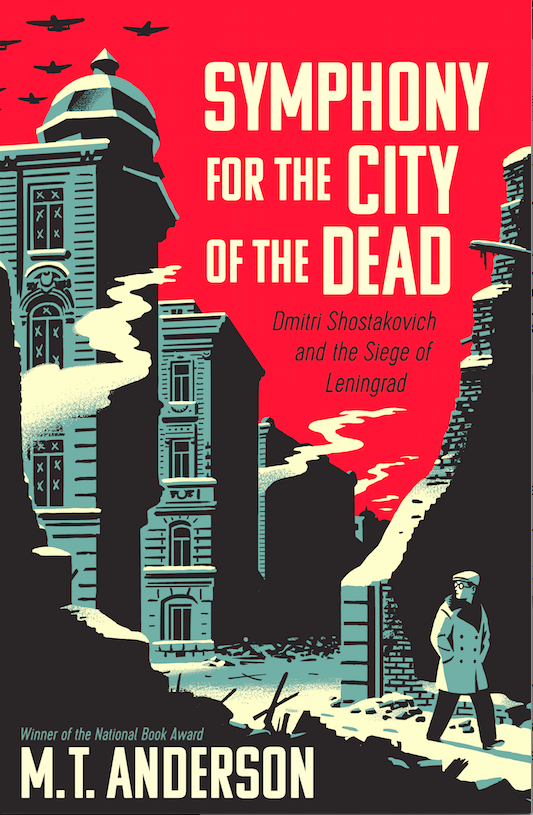“Symphony for the City of the Dead”: A Haunting Portrait of War-Torn Russia
Symphony for the City of the Dead may look like a novel, with its artsy cover and its poetic title, but it isn’t. It’s the non-fiction account of the life of Russian composer Dmitri Shostakovich, who lived during Stalin’s regime and escaped the seige of Leningrad. Some people who aren’t extremely observant, like me, might go so far as to actually read the description and still not realize it’s non-fiction, and might grab it from a stack at BookExpo America and add it to her rather extensive reading list. She might even read through the first few pages before it suddenly hits her that this is not a novel. But she wouldn’t let that stop her. Because if she stops reading, she will never become so completely engrossed in not only the life of Shostakovich, but the horrors that Russians endured from their own government before, during, and after World War II.
It’s not that I don’t like non-fiction; it’s just not my typical fare. I actually have quite a few non-fiction books on my Kindle that I absolutely intended to read; I just simply never got around to it. I’m not sure what it is that kept me reading Symphony for the City of the Dead after I realized that it wasn’t what I had been expecting, but I’m glad I didn’t put it aside and move to the next book on my list. I know that it’s not really the sort of thing we talk about here at The Geekiary, but this site is for us to talk about our feelings, and well, one of the things that gives me feelings is history.
Symphony for the City of the Dead is a remarkable portrait of the politics and society of Russia in the years leading up to and during the reign of Joseph Stalin. It’s been several weeks since I read it, and it still haunts me. Somehow I had never managed to fully understand the gravity of atrocities that Stalin committed against his own people. I don’t remember learning a lot about World War II-era Russia in school; I feel like my school focused primarily on our war with Germany and Japan. Reading this account of Shostakovich, I was horrified and appalled by the information on the pages. Nonetheless, I couldn’t put it down. I was absolutely captivated by the horrible history of the city of Saint Petersburg (Leningrad).
The titular symphony is Shostakovich’s seventh, which is called the “Leningrad Symphony”. It’s without a doubt his most well-known piece. He wrote it during the war and endangered both his and his family’s lives staying in the city during the siege in order to finish it. A good portion of the book is dedicated to its composition. After I finished the book, I immediately looked up the piece and listened to it. It is a brilliant and beautiful work, a powerful expression of war and resurrection.
The thing about non-fiction – especially books like M.T. Anderson’s Symphony for the City of the Dead – is that they could almost be fiction, because as you’re reading, you’re thinking, “There is no possible way that this is real.” It’s almost ludicrous, to a white middle-class girl from rural America, that the things in this book could possibly be true. But not only is this book true (to the best knowledge of the author – much about Shostakovich’s life is uncertain), but the events contained within occurred in living memory. There are people alive today who actually experienced these as they happened, and it just seems unbelievable.
I’m sure I can’t be the only person here who geeks out about history, and if you’re a history geek who is also a music geek, then you really should pick up a copy of Symphony for the City of the Dead. I don’t think you will regret it.
——-
Symphony for the City of the Dead by M.T. Anderson is published by Candlewick Press and is currently available wherever books are sold.
Author: Jamie Sugah
Jamie has a BA in English with a focus in creative writing from The Ohio State University. She self-published her first novel, The Perils of Long Hair on a Windy Day, which is available through Amazon. She is currently an archivist and lives in New York City with her demon ninja vampire cat. She covers television, books, movies, anime, and conventions in the NYC area.
Help support independent journalism. Subscribe to our Patreon.
Copyright © The Geekiary
Do not copy our content in whole to other websites. If you are reading this anywhere besides TheGeekiary.com, it has been stolen.Read our







